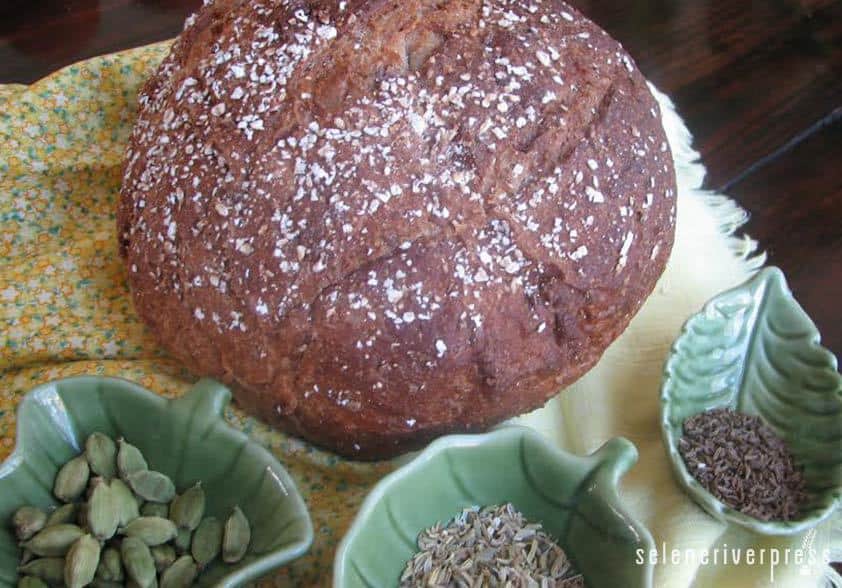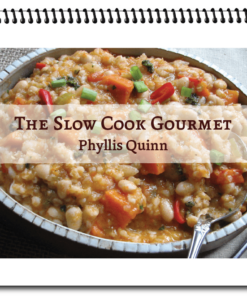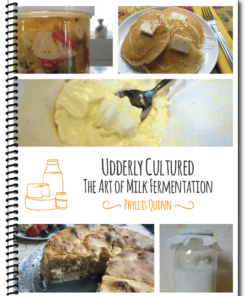Ask Chef Phyllis:
What do you know about Swedish breads? Limpa, pumpernickel, and other really dark ryes are my favorites. But they are, in my opinion, the most difficult breads to make. My mom, who left Stockholm when she was only eight, said dark rye bread has to have orange peel and lots of rye flour to be authentic. I’ve tried to make it many times, but the result is often a tough, rather flat loaf with a very long rising time (like 6-plus hours), which is a pain on busy days. Can you find some recipes that are easier and still have the right taste?
—Hillary Lindstrom, Cave Creek, Arizona
Dark rye, pumpernickel, and limpa breads (the deli ryes) are very popular today. Some believe that the “hardtack” so common in medieval times is the father of these dark rye, winter barley, and whole grain breads. The hardtack used for land rations during the Civil War were flat, biscuit-type breads that were baked only twice. The sea rations were baked at least four times to last for lengthy sea voyages. Hardtack has a shelf life of months rather than days, and it’s been said that it can keep sailors and soldiers, well, regular (in other words, it was a cure for constipation). History isn’t always tactful.
But, Hillary, what makes limpa bread Swedish rather than German is that sweet touch of cardamom, which I always bake into my authentic Swedish Tea Ring—the almond filling and cardamom fill the house with a sweetly exotic aroma long before the ladies arrive and the tea is poured. Ah, but that’s another post.
Here’s something the Swedes know and nutritionists are only saying now: the anise, fennel, caraway, and orange peel usually present in limpa bread are also digestive aids.
Through trial and error, artisan bread makers have discovered that using a wild yeast starter (or “sponge”) instead of a commercial yeast makes a more flavorful version of your favorite bread—and also gives it a higher lighter loaf.
Here’s a bread that will hit all your taste buds. The flours are alternated between rye and whole wheat to keep it lighter.
Limpa Bread
Ingredients
For the sponge:
1 cups non-chlorinated water
½ cup cracked rye (if you can’t find cracked rye, pulse it in your food processor for 1 minute)
2 teaspoons sea salt
For the dough:
1¾ teaspoons yeast
1⅔ cups non-chlorinated water
3½–4 ½ cups whole wheat flour
1½ teaspoons each fennel seed, anise seed, and caraway seed, roasted and ground
1–2 tablespoons freshly grated orange zest, plus juice of the orange (about ⅓ cup)
1 teaspoon ground cardamom
2 tablespoons olive oil (not extra virgin) or butter, melted
2 cups rye flour
Steel cut oatmeal, for garnish (optional)
Instructions
- Make the flour paste: Bring 1 cup of the water to a boil. Place cracked rye and sea salt in a large bowl and pour the boiled water over it. Set aside, uncovered, so it can collect the wild yeasts.
- Start the dough: Add yeast to ⅓ cup lukewarm water and let it bloom. Set aside.
- In a large bowl, combine remaining 1⅓ cups water with the bloomed yeast. Stir in 3 cups of the wheat flour. (It will be a thick batter.)
- Cover and set in a warm place for about 2 hours, or until almost doubled.
- Meanwhile, roast and grind the fennel, anise, and caraway seeds in a small, dry pot until aromatic. Be careful not to burn them. Grind seeds finely in a coffee grinder used for spices only. (If you like, you can do this in advance.)
- Stir the flour paste into the wheat flour mixture. Add the roasted and ground seeds, cardamom, orange zest and juice, and oil or butter.
- Gradually stir in enough of the remaining wheat flour to form a dough. Knead for about 3 minutes. It should be slightly tacky. Add the remaining wheat flour and the 2 cups of rye flour to form a dough.
- Place in a greased bowl. Cover and let rise for 2 hours.
- Cut the dough in half and shape into 2 round loaves. Place on a cookie sheet lined with greased parchment paper. Let rise about 1 hour.
- Heat oven to 350° Slash the tops of the loaves with a razor. If using, dust with the oatmeal.
- Bake for about 50 minutes. Cool completely before slicing.
Chef’s tip:
This true limpa might take some time to master, but soaking the flour produces a lighter loaf, and roasting the seeds develops the flavors you desire. In my opinion, it is definitely worth the extra steps for the best limpa ever!
Image from Phyllis Quinn.





